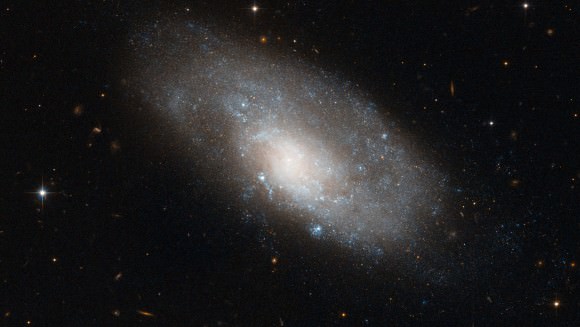Although somewhat blobby and deformed, this is in fact a spiral galaxy, located in the southern constellation Hydra. Imaged by Hubble as part of a survey of galactic bulges, NGC 4980 exhibits what’s called a “pseudobulge” — an inline central concentration of stars whose similar spiral motion extends right down into its core.
As opposed to classical bulges, in which stars orbit their galaxy’s core in all directions, pseudobulges are made up of stars that continue along the spiral motion of the galactic arms all the way into the center. Pseudobulges are typically seen to contain stars that are the same age as most of the others in the galaxy.
In contrast, classical bulges usually contain stars older than those found in the disk, leading astrophysicists to believe that galaxies with classical bulges had undergone one or more collisions with other galaxies during their evolution.
Our own Milky Way is thought to have a pseudobulge, while some spiral galaxies have no discernible bulge at all.
This image is composed of exposures taken in visible and infrared light by Hubble’s Advanced Camera for Surveys. The image is approximately 3.3 by 1.5 arcminutes in size. NGC 4980 is located about 80 million light-years from Earth.
Read more on ESA’s Hubble site and find out more about galactic bulges on astrobites.com.
Image credit: ESA/Hubble and NASA.
Source: Universe Today

No hay comentarios:
Publicar un comentario